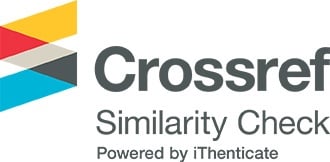Tầm soát bàn chân bẹt của sinh viên Khoa Vật lý trị liệu - Phục hồi chức năng, Trường Đại học Quốc tế Hồng Bàng
Các tác giả
DOI: https://doi.org/10.59294/HIUJS.22.2023.283Từ khóa:
flat foot , exercise for flat foot, heel deviationTóm tắt
Đặt vấn đề: Bàn chân bẹt (BCB) là một dị tật khá phổ biến và rất dễ gặp và quan sát được trong đời sống. BCB nếu không chữa trị kịp thời có thể ảnh hưởng đến dáng đi và khiến người bệnh đau nhức liên tục kéo dài. Mục tiêu nghiên cứu: Thể hiện bức tranh toàn cảnh về thực trạng mắc BCB ở nhóm tuổi từ 19 - 25. Đưa ra đề xuất về các thói quen sinh hoạt hằng ngày, các bài tập đơn giản để cải thiện tật bàn chân bẹt. Phương pháp nghiên cứu: Những sinh viên bị BCB trong độ tuổi từ 19 - 25 tuổi và đồng ý tham gia nghiên cứu. Tiêu chí loại ra là những sinh viên có bất kì các loại dị dạng bẩm sinh, các mô sẹo hay đã từng tham gia phẫu thuật chi dưới. Kết quả nghiên cứu: Độ lệch gót trung bình của nữ tham gia không bị BCB ở bên chân trái là 10.20 và ở chân bên phải là 9.80. Trong khi đó ở nữ bị BCB độ lệch gót trung bình ở chân trái là 11.10 và chân phải là 10.40. Kết luận và kiến nghị: Tầm soát cho thấy được tính cấp bách và tầm quan trọng của các bài tập và phương pháp đề cập nêu trên đối với việc hạn chế các hậu quả gây ra do bị BCB trong thời gian lâu dài.
Abstract
Introduction: The flat foot is a fairly common malformation and is easy to observe in life. The flat foot, if not treated promptly, could cause diseases such as knee pain, affecting the gait due to the external crookedness of the heel and the internal strength of the foot that deflects the spinal axis, causing the patient to have persistent pain such as ankle joint pain, joints of the foot, knee joints, hip joints, causing back pain. Objective: Showing the whole picture of the situation of flat foot in the age group of 19 - 25. Make suggestions on daily living habits, simple exercises to improve flat foot. Methods: Students with flat foot ranged in age from 19 years old to 25 years old and agreed to participate in the study. The exclusion criteria are students who have any type of congenital malformation, scar tissue or have participated in lower extremity surgery. Results: The average heel deviation of female participants without flat foot on the left leg was 10.20 and on the right leg was 9.80. Meanwhile in females flat foot the average heel deviation in the left leg is 11.10 and the right leg is 10.40. Conclusion: Screening shows the urgency and importance of the exercises and methods mentioned above for limiting the consequences caused by flat foot in the long term. Screening encourages people with flat feet to actively exercise to be able to best improve the arch of the foot.
Tài liệu tham khảo
[1] L. T.Staheli, "Practice of pediatric orthopedics," pp. 132-137, 2017.
[2] A. D. Craxford, R. J. Minns, and C. Park, "Plantar pressures and gait parameters: a study of foot shape and limb rotations in children," J Pediatr Orthop, vol. 4, no. 4, pp. 477-81, Aug 1984.
[3] A. Garcia-Rodriguez, F. Martin-Jimenez, M. Carnero-Varo, E. Gomez-Gracia, J. Gomez-Aracena, and J. Fernandez-Crehuet, "Flexible flat feet in children: a real problem?," Pediatrics, vol. 103, no. 6, p. e84, Jun 1999.
[4] A. M. Evans and K. Rome, "A Cochrane review of the evidence for non-surgical interventions for flexible pediatric flat feet," Eur J Phys Rehabil Med, vol. 47, no. 1, pp. 69-89, Mar 2011.
[5] M. Pfeiffer, R. Kotz, T. Ledl, G. Hauser, and M. Sluga, "Prevalence of flat foot in preschool-aged children," Pediatrics, vol. 118, no. 2, pp. 634-9, Aug 2006.
[6] S. E. Yagerman, M. B. Cross, R. Positano, and S. M. Doyle, "Evaluation and treatment of symptomatic pes planus," Curr Opin Pediatr, vol. 23, no. 1, pp. 60-7, Feb 2011.
[7] Y. F. Shih, C. Y. Chen, W. Y. Chen, and H. C. Lin, "Lower extremity kinematics in children with and without flexible flatfoot: a comparative study," BMC Musculoskelet Disord, vol. 13, p. 31, Mar 2, 2012.
[8] G. Fabry, "Clinical practice. Static, axial, and rotational deformities of the lower extremities in children," Eur J Pediatr, vol. 169, no. 5, pp. 529-34, May 2010.
[9] M. S. Lee et al., "Diagnosis and treatment of adult flatfoot," J Foot Ankle Surg, vol. 44, no. 2, pp. 78-113, Mar-Apr 2005.
[10] Y. Tashiro et al., "Children with flat feet have weaker toe grip strength than those having a normal arch," J Phys Ther Sci, vol. 27, no. 11, pp. 3533-6, Nov 2015.
[11] H. Iijima et al., "Association of bilateral flat feet with knee pain and disability in patients with knee osteoarthritis: A cross-sectional study," J Orthop Res, vol. 35, no. 11, pp. 2490-2498, Nov 2017.
[12] R. Sheykhi-Dolagh et al., "The influence of foot orthoses on foot mobility magnitude and arch height index in adults with flexible flat feet," Prosthet Orthot Int, vol. 39, no. 3, pp. 190-6, Jun 2015.
[13] K. C. Seo and K. Y. Park, "The effects of foot orthosis on the gait ability of college students in their 20s with flat feet," J Phys Ther Sci, vol. 26, no. 10, pp. 1567-9, Oct 2014.
[14] J. P. Chen, M. J. Chung, C. Y. Wu, K. W. Cheng, and M. J. Wang, "Comparison of Barefoot Walking and Shod Walking Between Children with and Without Flat Feet," J Am Podiatr Med Assoc, vol. 105, no. 3, pp. 218-25, May 2015.
[15] J. E. Lee, G. H. Park, Y. S. Lee, and M. K. Kim, "A Comparison of Muscle Activities in the Lower Extremity between Flat and Normal Feet during One-leg Standing," J Phys Ther Sci, vol. 25, no. 9, pp. 1059-61, Sep 2013.
Tải xuống
Tải xuống: 303











